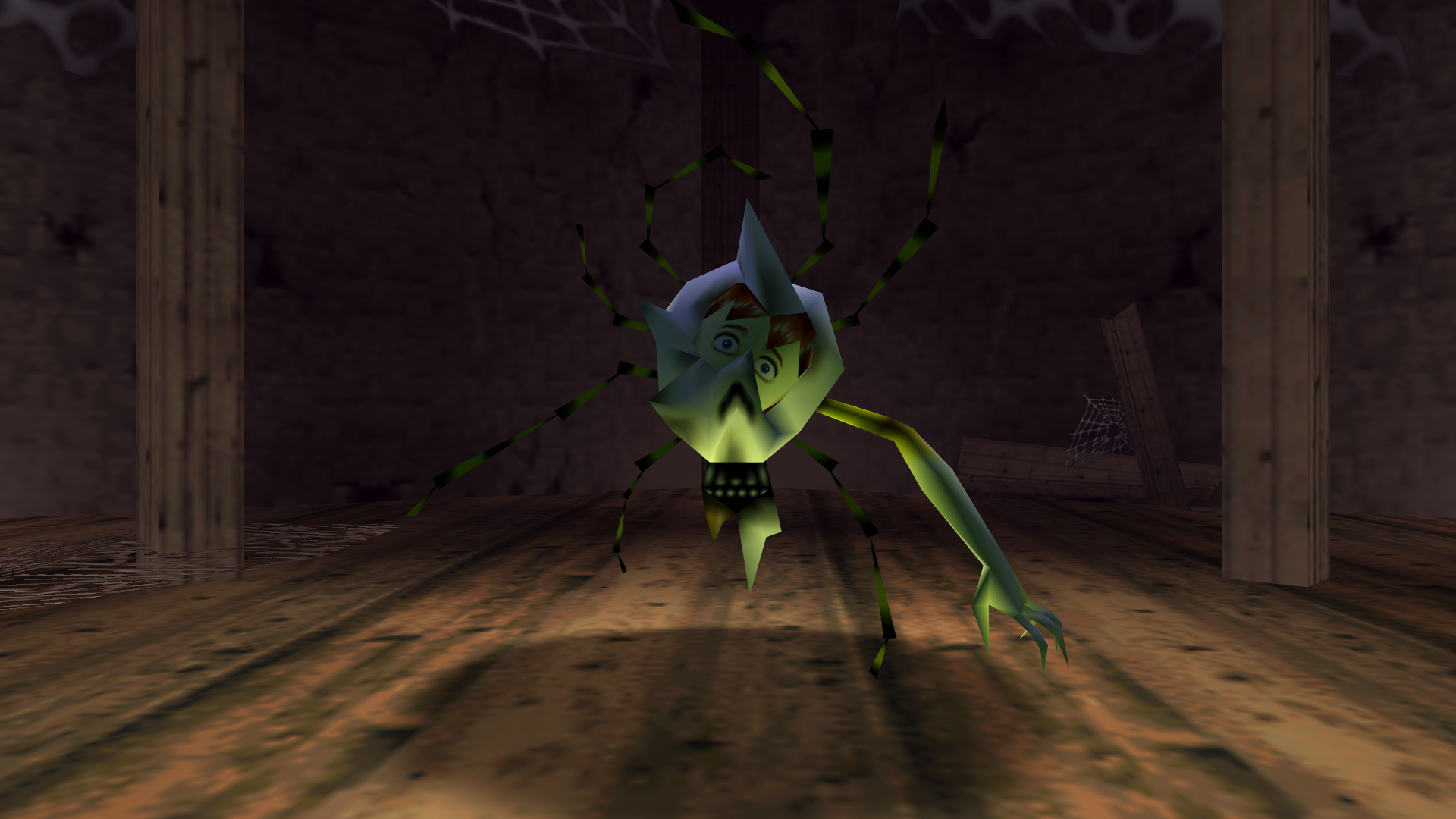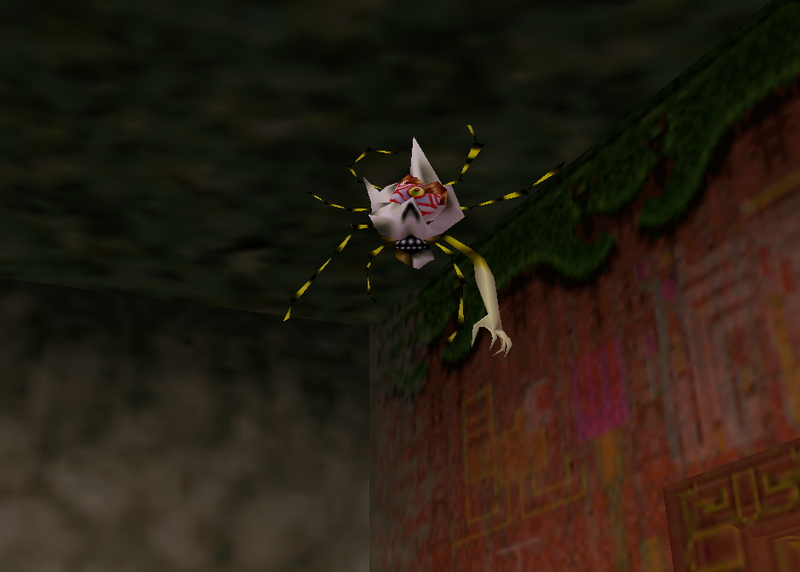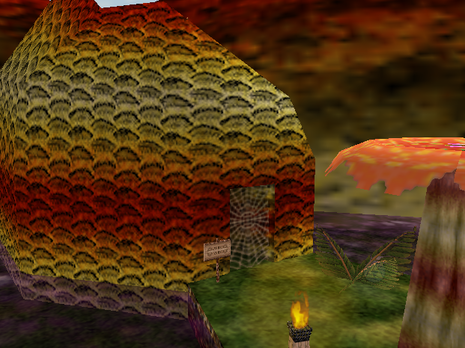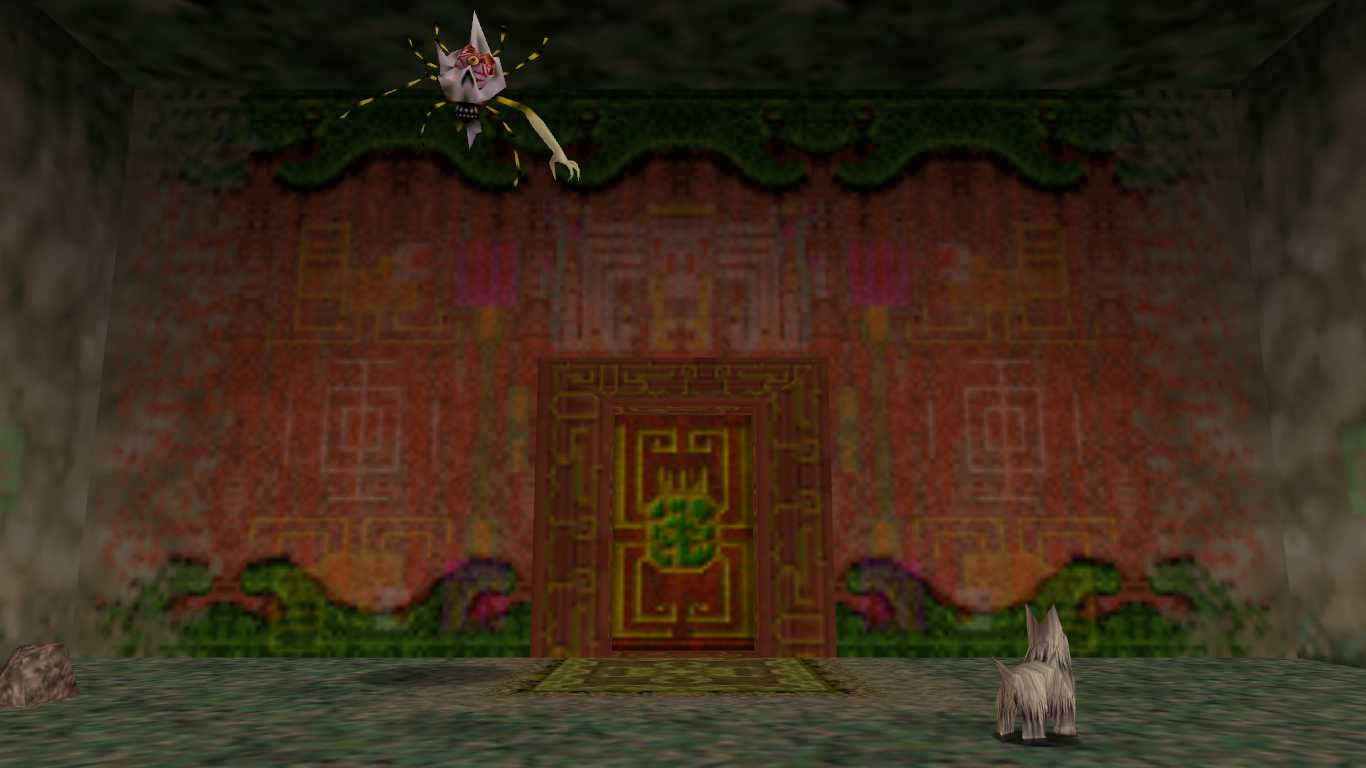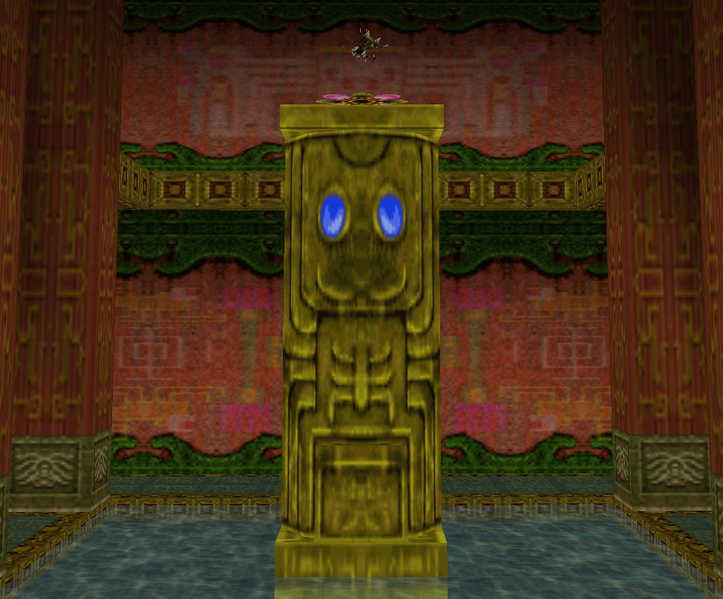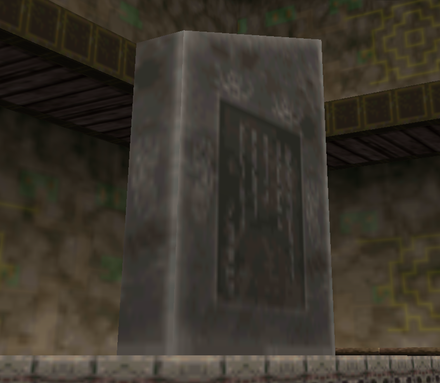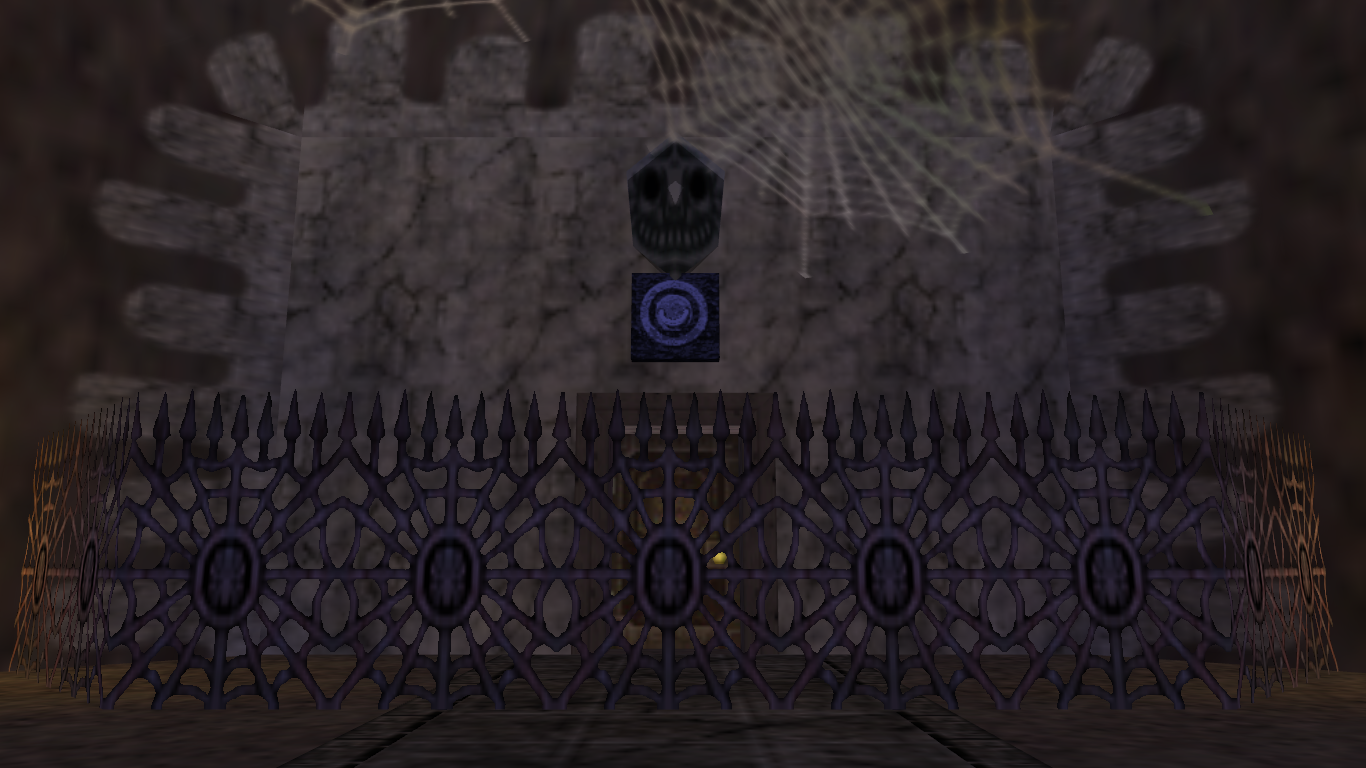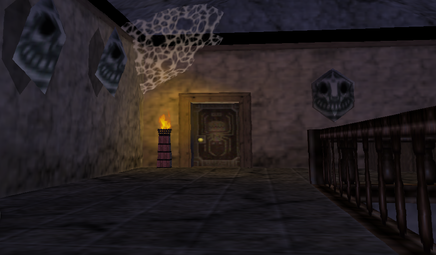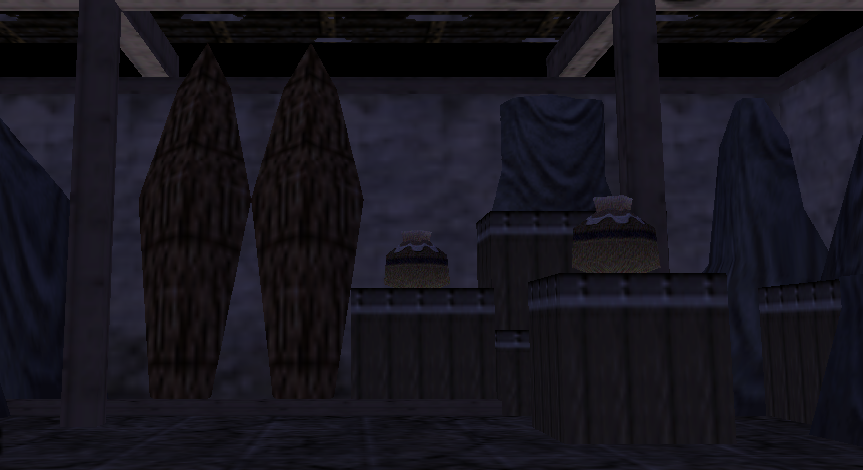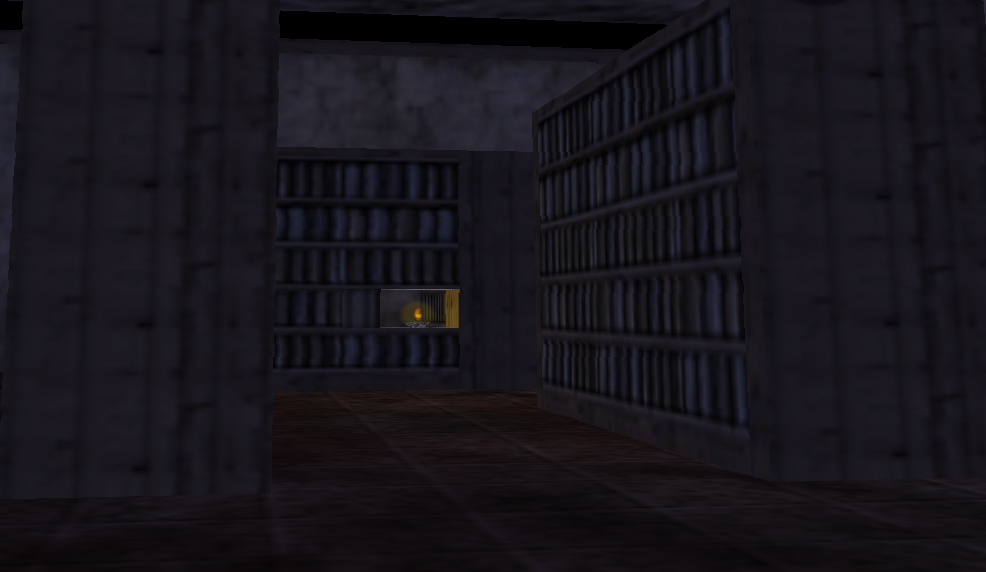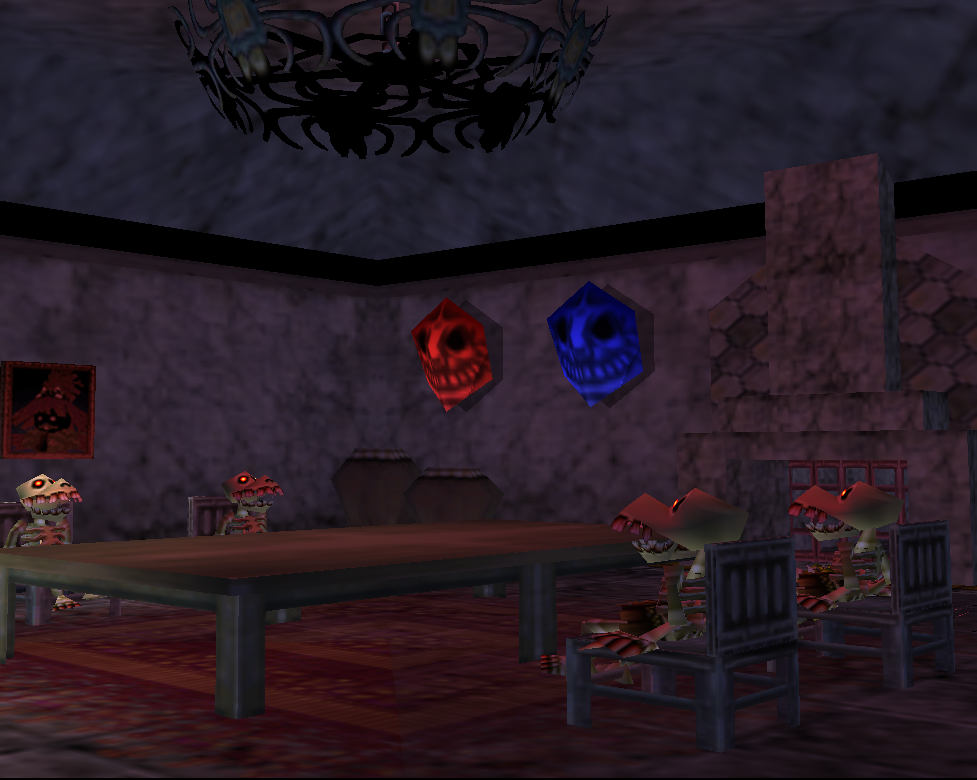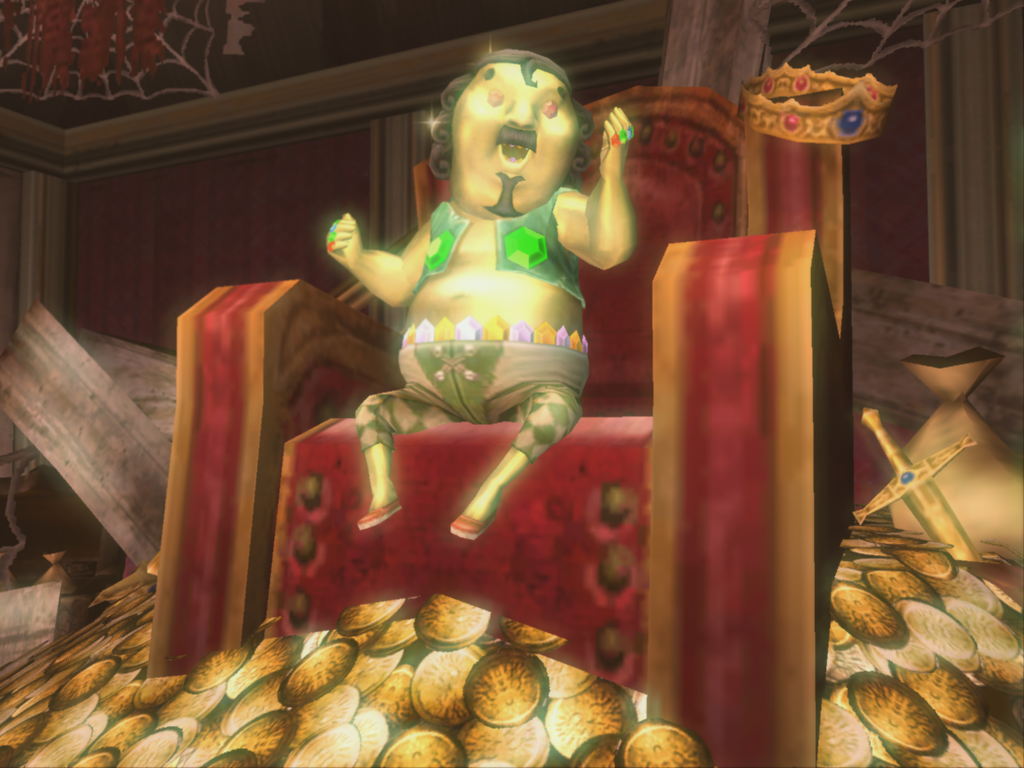On Spider Houses and Greed within The Legend of Zelda
“If you lift the curse . . . I’ll teach you . . . something good . . . Hurry . . . Please . . . This is awful . . . In here . . . The gold ones . . . The cursed spiders . . . Defeat them all . . . Make me normal . . . again . . . .”
— The Cursed Man, Majora’s Mask
“Human desire is an insatiable,
fearsome thing . . . even to a demon!
But then again, I suppose it's also
what makes your kind so intriguing . . . .”
— Batreaux, Skyward Sword
Introduction
For me, and perhaps many readers, one of the most powerful images from The Legend of Zelda retained by memory is that of the House of Skulltula in Ocarina of Time’s Kakariko Village. Nestled in the midst of the most ostensibly peaceful location in Hyrule is an unassuming grey house, which, as we learn from the townsfolk, has a dark history and a necessary moral lesson. An elderly villager in Kakariko gives us this history: “Folks around here tell of a fabulously rich family that once lived in one of the houses in this village . . . But they say that the entire family was cursed due to their greed! Who knows what might happen to those who are consumed by greed.” [1] This tale is corroborated by the cursed father within the House of Skulltula, who tells Link of the curse on his family. Avarice fed his unquenchable desires, and before long, such vice led to the Curse of the Spider, here represented by Gold Skulltulas — themselves a perceptible symbol of greed. In order to dispel the spider’s curse, Link must destroy Gold Skulltulas the world over, collecting them as he goes; and in doing this, he also destroys a visible manifestation of greed and selfishness in Hyrule. [2]
Oft talked about, but little understood, the Spider Houses inhabiting both Hyrule and Termina hold a subtle fascination commonly overshadowed by rising plot, climax, and resolution. Spider Houses do not play pivotal roles in furthering the story, but they often augment small side-chapters parallel to the larger story with parables, morals, and mysteries. They also sound a clarion call against avarice, warning of greed’s corrupting influence on the face of the human soul.
As true in all societies and all places, the Curse of the Spider can take root in any human being, so it should be unsurprising that we also find people consumed with, and transformed by, greed within the parallel realm of Termina.
For me, and perhaps many readers, one of the most powerful images from The Legend of Zelda retained by memory is that of the House of Skulltula in Ocarina of Time’s Kakariko Village. Nestled in the midst of the most ostensibly peaceful location in Hyrule is an unassuming grey house, which, as we learn from the townsfolk, has a dark history and a necessary moral lesson. An elderly villager in Kakariko gives us this history: “Folks around here tell of a fabulously rich family that once lived in one of the houses in this village . . . But they say that the entire family was cursed due to their greed! Who knows what might happen to those who are consumed by greed.” [1] This tale is corroborated by the cursed father within the House of Skulltula, who tells Link of the curse on his family. Avarice fed his unquenchable desires, and before long, such vice led to the Curse of the Spider, here represented by Gold Skulltulas — themselves a perceptible symbol of greed. In order to dispel the spider’s curse, Link must destroy Gold Skulltulas the world over, collecting them as he goes; and in doing this, he also destroys a visible manifestation of greed and selfishness in Hyrule. [2]
Oft talked about, but little understood, the Spider Houses inhabiting both Hyrule and Termina hold a subtle fascination commonly overshadowed by rising plot, climax, and resolution. Spider Houses do not play pivotal roles in furthering the story, but they often augment small side-chapters parallel to the larger story with parables, morals, and mysteries. They also sound a clarion call against avarice, warning of greed’s corrupting influence on the face of the human soul.
As true in all societies and all places, the Curse of the Spider can take root in any human being, so it should be unsurprising that we also find people consumed with, and transformed by, greed within the parallel realm of Termina.
The Swamp Spider House – “The Fearful Spider House”
Situated near at hand to the Deku Royal Palace, rather deep in the heart of the swamp, a strange building — short and organic — squats underneath large palms and the high walls of the bog. Like a palm itself, or perhaps some amalgam of palm, pineapple, and termite nest, the building rises slowly to a point, reflecting red and yellow streaks off the cliffs and water. A small sign outside declares that this entrance, itself blocked by cobwebs, leads into the Fearful Spider House, though whether this sign is meant to deter or entice remains up to the individual. Once the webs have been burned away, a short tunnel leads to an antechamber of grass and stone, with a small dog and its owner. The man himself, far from his original form or nature, has been transfigured almost to the point of unintelligibility. Mostly Skulltula, slight human features remain: remnants of a human skull, and one human hand, reaching and twisted. Even at the heart of this warped body, though, is Truth. In his pursuit of wealth and excess, this man was given the Mask of Truth by an unknown person at some point in the past, and was told that herein he would find riches; however, he found only a curse.
The first room itself is quite stark. Aside from naturally-sloping walls and greenery, only two small maps, rich with color and guidance, can be found upon the opposing walls. With the primary wall, however, the embellishments drastically change. The doors within this complex are lovely; painted in scarlet hues, or perhaps covered in fine stones, given the ostentation and gilded beauty of this place, a backdrop is provided for the preeminent motif of this space: the spider. An emerald body, stringed and limned with gold, sits at the very center of each door, with curling, extending legs forming both border and patterning. As we will see, these lines — of silver, gold, and other precious metals — will play a marked importance throughout this House.
Situated near at hand to the Deku Royal Palace, rather deep in the heart of the swamp, a strange building — short and organic — squats underneath large palms and the high walls of the bog. Like a palm itself, or perhaps some amalgam of palm, pineapple, and termite nest, the building rises slowly to a point, reflecting red and yellow streaks off the cliffs and water. A small sign outside declares that this entrance, itself blocked by cobwebs, leads into the Fearful Spider House, though whether this sign is meant to deter or entice remains up to the individual. Once the webs have been burned away, a short tunnel leads to an antechamber of grass and stone, with a small dog and its owner. The man himself, far from his original form or nature, has been transfigured almost to the point of unintelligibility. Mostly Skulltula, slight human features remain: remnants of a human skull, and one human hand, reaching and twisted. Even at the heart of this warped body, though, is Truth. In his pursuit of wealth and excess, this man was given the Mask of Truth by an unknown person at some point in the past, and was told that herein he would find riches; however, he found only a curse.
The first room itself is quite stark. Aside from naturally-sloping walls and greenery, only two small maps, rich with color and guidance, can be found upon the opposing walls. With the primary wall, however, the embellishments drastically change. The doors within this complex are lovely; painted in scarlet hues, or perhaps covered in fine stones, given the ostentation and gilded beauty of this place, a backdrop is provided for the preeminent motif of this space: the spider. An emerald body, stringed and limned with gold, sits at the very center of each door, with curling, extending legs forming both border and patterning. As we will see, these lines — of silver, gold, and other precious metals — will play a marked importance throughout this House.
In total, there are six rooms that make up this complex, one of which we have traversed. And in passing the initial gate, we have left all semblances of the natural and organic at the door. The main hall of this structure, in two distinct stories and divided by eight massive pillars, is lavishly baroque. A ramp leads downward into a small pool of clear water in the middle of the room, out of which rises a skeletal, carapace-covered statue. Two sapphire eyes, round and wide, stare unblinkingly forward out of a golden head, frighteningly paired with huge, curving mandibles inches away. The body is segmented, like that of a spider or many other such crawling things, and is formed out of tarnished gold. The walls and pillars bear many designs and embellishments, the most repeated of which is an almost arabesque design of interlacing gold and silver lines. These weave within and without of one another, framing more representative pieces of art, even if the depictions are themselves very odd.
One such design shows two trees (which seem taken out of ancient Chinese watercolors) bound together by an angular golden web, with script of some sort running the length of it, below. Another depicts two pink flowers resting upon green stems, also bound together by webs; the design is reflected in perfect symmetry, as if the image were being echoed in a mirror immediately below the primary design. However, as has been stated, the primary motif running throughout this complex is that of the spider. There are no fewer than five distinct representations of spiders within this structure. The most lavish can be found above the main doorway into the Golden Room (which rests immediately past the main hall). It is an enormous white spider squatting above the doorway, with curled legs, golden mandibles, and four red eyes. Other spiders frame this larger one, though they, in no way, rival its size or splendor.
The other two rooms off the main hall are more natural than the central chamber, having floors of grass and walls of stone, though they also follow the gold, red, and white designs found ubiquitously herein. The final room, accessed through a difficult-to-enter passage in the second-story wall of the Golden Room, is exceedingly curious. This room shows nothing of the previous ostentation, being a natural grotto. A low hedge runs around the room, framing a large tree and a Sheikah Stone; the tree’s canopy covers the ceiling entirely, giving a strange sylvan setting to this small cavern. The austerity of this room — its simplicity and modesty — is perhaps meant to represent an alternative ascetic lifestyle so completely opposite to the immoderate profligacy of this House. Architecture often gives us delicate messages and teachings, if only we know how to discover them — and, once we have done that, interpret them as they are meant to be perceived.
One such design shows two trees (which seem taken out of ancient Chinese watercolors) bound together by an angular golden web, with script of some sort running the length of it, below. Another depicts two pink flowers resting upon green stems, also bound together by webs; the design is reflected in perfect symmetry, as if the image were being echoed in a mirror immediately below the primary design. However, as has been stated, the primary motif running throughout this complex is that of the spider. There are no fewer than five distinct representations of spiders within this structure. The most lavish can be found above the main doorway into the Golden Room (which rests immediately past the main hall). It is an enormous white spider squatting above the doorway, with curled legs, golden mandibles, and four red eyes. Other spiders frame this larger one, though they, in no way, rival its size or splendor.
The other two rooms off the main hall are more natural than the central chamber, having floors of grass and walls of stone, though they also follow the gold, red, and white designs found ubiquitously herein. The final room, accessed through a difficult-to-enter passage in the second-story wall of the Golden Room, is exceedingly curious. This room shows nothing of the previous ostentation, being a natural grotto. A low hedge runs around the room, framing a large tree and a Sheikah Stone; the tree’s canopy covers the ceiling entirely, giving a strange sylvan setting to this small cavern. The austerity of this room — its simplicity and modesty — is perhaps meant to represent an alternative ascetic lifestyle so completely opposite to the immoderate profligacy of this House. Architecture often gives us delicate messages and teachings, if only we know how to discover them — and, once we have done that, interpret them as they are meant to be perceived.
The Oceanside Spider House
If the swamp were a strange place for an opulent temple to Desire, the Oceanside Spider House, found along the shores of the Great Bay, provides a drastically different companion structure to our discussion, and augments our dialogue in a couple of key ways. Resting near to the Fisherman’s Hut on the primary beach of Termina, the Oceanside Spider House appears unremarkable; echoing, almost perfectly, the larger house to its right in both architecture and design, this house shows all the signs of local materials (tile, thatching, timber, and stone) and construction (from the raised step to the sun beacon above). At first, there is nothing that elucidates what the structure is, and the interior provides no clues as to what lies beneath, aside from some indeterminable scuffling and scraping in the walls. Bombing the back wall reveals a passage to a hidden subterranean system of rooms, initially guarded by a wrought-iron fence of strange design. Like interlocking shields, or cozied-up spiders’ webs, the circular motif of the fence presents an image at once both defensive, and mesmerizing. Beyond the fence, accessible only by hookshot, is a stark wall bearing an undular white design and a singular mask with strong brows, a grimacing mouth, and dead eyes. The wooden door, unsurprisingly, is carved with the image of a large spider.
The Oceanside Spider House takes its design from many common tropes present in horror genres the world over: webs, low light, shadows in the corner, dust, a sense of antiquity, and the furtive noises of things just out of view. The mask discussed above features prominently upon the walls, at varying heights, and exposed beams and falling-apart plaster walls provide the perfect habitat for webs, dust, and mold. Given the items inside the house — crates, boxes, covered furniture, and other storage implements — we get the sense of a hurried move, as if someone were fleeing, either inwardly, to safety, or externally, to freedom. Regardless, much of the house seems to be in storage, while larger pieces of furniture, like bookshelves, tables, and chairs, remain, collecting dust and stories. A world apart from the Fearful Spider House, this place gives a glimpse of the future, in which material goods decay and are forgotten; whatever wealth we obtain cannot outlast the world. Indeed, it can barely outlast us. What may be “fearful” about the initial Spider House is not its imagery, but its admonitions.
If the swamp were a strange place for an opulent temple to Desire, the Oceanside Spider House, found along the shores of the Great Bay, provides a drastically different companion structure to our discussion, and augments our dialogue in a couple of key ways. Resting near to the Fisherman’s Hut on the primary beach of Termina, the Oceanside Spider House appears unremarkable; echoing, almost perfectly, the larger house to its right in both architecture and design, this house shows all the signs of local materials (tile, thatching, timber, and stone) and construction (from the raised step to the sun beacon above). At first, there is nothing that elucidates what the structure is, and the interior provides no clues as to what lies beneath, aside from some indeterminable scuffling and scraping in the walls. Bombing the back wall reveals a passage to a hidden subterranean system of rooms, initially guarded by a wrought-iron fence of strange design. Like interlocking shields, or cozied-up spiders’ webs, the circular motif of the fence presents an image at once both defensive, and mesmerizing. Beyond the fence, accessible only by hookshot, is a stark wall bearing an undular white design and a singular mask with strong brows, a grimacing mouth, and dead eyes. The wooden door, unsurprisingly, is carved with the image of a large spider.
The Oceanside Spider House takes its design from many common tropes present in horror genres the world over: webs, low light, shadows in the corner, dust, a sense of antiquity, and the furtive noises of things just out of view. The mask discussed above features prominently upon the walls, at varying heights, and exposed beams and falling-apart plaster walls provide the perfect habitat for webs, dust, and mold. Given the items inside the house — crates, boxes, covered furniture, and other storage implements — we get the sense of a hurried move, as if someone were fleeing, either inwardly, to safety, or externally, to freedom. Regardless, much of the house seems to be in storage, while larger pieces of furniture, like bookshelves, tables, and chairs, remain, collecting dust and stories. A world apart from the Fearful Spider House, this place gives a glimpse of the future, in which material goods decay and are forgotten; whatever wealth we obtain cannot outlast the world. Indeed, it can barely outlast us. What may be “fearful” about the initial Spider House is not its imagery, but its admonitions.
Above, left to right: The upper hallway and primary storage room of the Oceanside Spider House
The library is one of the critical rooms of the complex, laid out like a labyrinth of poetry and thought, where Stalchildren patrol and low fires burn. Sadly, for as much history as probably resides within these books, we remain unable to access it; the Stalchildren, however, report that they are here at the order of their captain, though what they are investigating is unknown. The principal room is the dining hall, where four Stalchildren sit upon four chairs under a large arachnidan chandelier (a spider motif previously seen in the Fearful Spider House, begging questions of common design or planning). Upon the wall, curiously, are four paintings of the Skull Kid, and four large masks (those masks seen previously) colored in the primary colors, plus a vivid green. Having gathered clues from the Stalchildren throughout the house, Link is able to reveal a hidden room through the fireplace by shooting the masks in a particular order. A staircase is exposed beyond the fireplace, leading to a small treasury. Perhaps in homage to the Treasury of Atreus near Mycenae, Greece, this small treasure-hoard is a grey tholos chamber, ribbed with stone, and capped with an inverse dome of hexagonally-fitted stones. These stones fit together like honeycomb, and are perhaps in reference to the traditional English name for tholos structures such as these: beehive tombs. True to Zelda, though, there are also in-game motifs at play, the key one of which is a large spider rug under the central treasure chest, waiting patiently in a web of pink and red.
We are not alone in our interest in this building, however. There is one other man who sees the looming destruction of Termina. Asking Link in fearful earnestness, he begs for the shelter, as he hopes it will protect him from the falling moon, meanwhile intoning prayers to the Goddess of Time for divine protection. In a land of people relatively untroubled by a nearing moon, at least one person sees reality as it is, though the house, with its sounds and disturbances, may not prove the most pleasant place to weather an apocalypse.
We are not alone in our interest in this building, however. There is one other man who sees the looming destruction of Termina. Asking Link in fearful earnestness, he begs for the shelter, as he hopes it will protect him from the falling moon, meanwhile intoning prayers to the Goddess of Time for divine protection. In a land of people relatively untroubled by a nearing moon, at least one person sees reality as it is, though the house, with its sounds and disturbances, may not prove the most pleasant place to weather an apocalypse.
Final Meditations
While greed corrupts humans most commonly at the spiritual level (that is to say at a non-visible level, though some people evince perceptible signs of selfishness and desire), in Zelda, these effects are written plainly upon the bodies of those cursed by the spirit of Greed. Ganondorf, with his endless hunger for Power, is disfigured countless times into hideous forms; men and children are distorted into misshapen chimeras in Kakariko; people searching for treasure Beneath the Well in Ikana are transformed into slavering and mindless Gibdos; and Jovani, in a mythical admixture of Goethe and Midas, is simply turned to Gold after he sells his soul for riches. [4] In Hyrule, as well as in Termina, overt acts of craving and avarice are often followed by supernatural punishment. In a world filled with powers both sacred and profane, rampant greed does not go unpunished, and these otherworldly hexes are also a form of grace. Not only do those cursed serve as visible reminders to others about the pitfalls of vice, but their curses are only of the body. Sentience remains, and therefore, so does conscience. Moral voice, so long obfuscated by constant desire and craving, regains some of its strength, hinting at another path to happiness. For those that are cursed, the ultimate realization is that only one way leads to salvation: anger is futile, grief is futile, and even regret is futile. These cursed beings eventually come to realize that their humanity is more important than their hoarded gold, and once they understand the folly of their past excesses and actions, they can begin moving forward, once again, toward actualizing their forgotten humanity.
While greed corrupts humans most commonly at the spiritual level (that is to say at a non-visible level, though some people evince perceptible signs of selfishness and desire), in Zelda, these effects are written plainly upon the bodies of those cursed by the spirit of Greed. Ganondorf, with his endless hunger for Power, is disfigured countless times into hideous forms; men and children are distorted into misshapen chimeras in Kakariko; people searching for treasure Beneath the Well in Ikana are transformed into slavering and mindless Gibdos; and Jovani, in a mythical admixture of Goethe and Midas, is simply turned to Gold after he sells his soul for riches. [4] In Hyrule, as well as in Termina, overt acts of craving and avarice are often followed by supernatural punishment. In a world filled with powers both sacred and profane, rampant greed does not go unpunished, and these otherworldly hexes are also a form of grace. Not only do those cursed serve as visible reminders to others about the pitfalls of vice, but their curses are only of the body. Sentience remains, and therefore, so does conscience. Moral voice, so long obfuscated by constant desire and craving, regains some of its strength, hinting at another path to happiness. For those that are cursed, the ultimate realization is that only one way leads to salvation: anger is futile, grief is futile, and even regret is futile. These cursed beings eventually come to realize that their humanity is more important than their hoarded gold, and once they understand the folly of their past excesses and actions, they can begin moving forward, once again, toward actualizing their forgotten humanity.
Notes and Works Cited:
[1] Majora’s Mask. Old Man. Nintendo. 26 Oct. 2000. Video Game.
[2] Perplexingly — poetically, even — the hunt for the Gold Skulltulas can also lead to a sort of greed, or selfishness, if one pursues them for the wrong ends. While the hope is that the player can see through the delusion of materiality and self-indulgence, it is possible to hunt the golden spiders out of a desire to obtain better items or benefits. The cursed children of the House of Skulltula bestow gifts unto Link when healed, perverting the purity of doing Good for its own sake, or for the sake of others. And, if we as players are not careful, we simply transfer the mantle of the spider’s curse onto ourselves.
[3] Majora’s Mask. Dog. Nintendo. 26 Oct. 2000. Video Game.
[4] Jovani sold his soul to a dark creature (later discovered to be a Poe) for gold. He tells Link he was consumed by greed some time ago, and was changed to a being of gold, once again playing upon the Fairy-tale warning of making deals with unknown creatures, and of being incredibly careful what we wish for. He begs of Link to help kill the spirits that keep him in this form, and when Link eventually destroys sixty of their kind, Jovani is able to return to his former body. Another curious aspect of the moral injunctions against greed within The Legend of Zelda series is that most cursed beings require being rescued, as they are incapable of saving themselves. I am not sure what this speaks to, other than interdependence and the importance of compassion.
[1] Majora’s Mask. Old Man. Nintendo. 26 Oct. 2000. Video Game.
[2] Perplexingly — poetically, even — the hunt for the Gold Skulltulas can also lead to a sort of greed, or selfishness, if one pursues them for the wrong ends. While the hope is that the player can see through the delusion of materiality and self-indulgence, it is possible to hunt the golden spiders out of a desire to obtain better items or benefits. The cursed children of the House of Skulltula bestow gifts unto Link when healed, perverting the purity of doing Good for its own sake, or for the sake of others. And, if we as players are not careful, we simply transfer the mantle of the spider’s curse onto ourselves.
[3] Majora’s Mask. Dog. Nintendo. 26 Oct. 2000. Video Game.
[4] Jovani sold his soul to a dark creature (later discovered to be a Poe) for gold. He tells Link he was consumed by greed some time ago, and was changed to a being of gold, once again playing upon the Fairy-tale warning of making deals with unknown creatures, and of being incredibly careful what we wish for. He begs of Link to help kill the spirits that keep him in this form, and when Link eventually destroys sixty of their kind, Jovani is able to return to his former body. Another curious aspect of the moral injunctions against greed within The Legend of Zelda series is that most cursed beings require being rescued, as they are incapable of saving themselves. I am not sure what this speaks to, other than interdependence and the importance of compassion.

